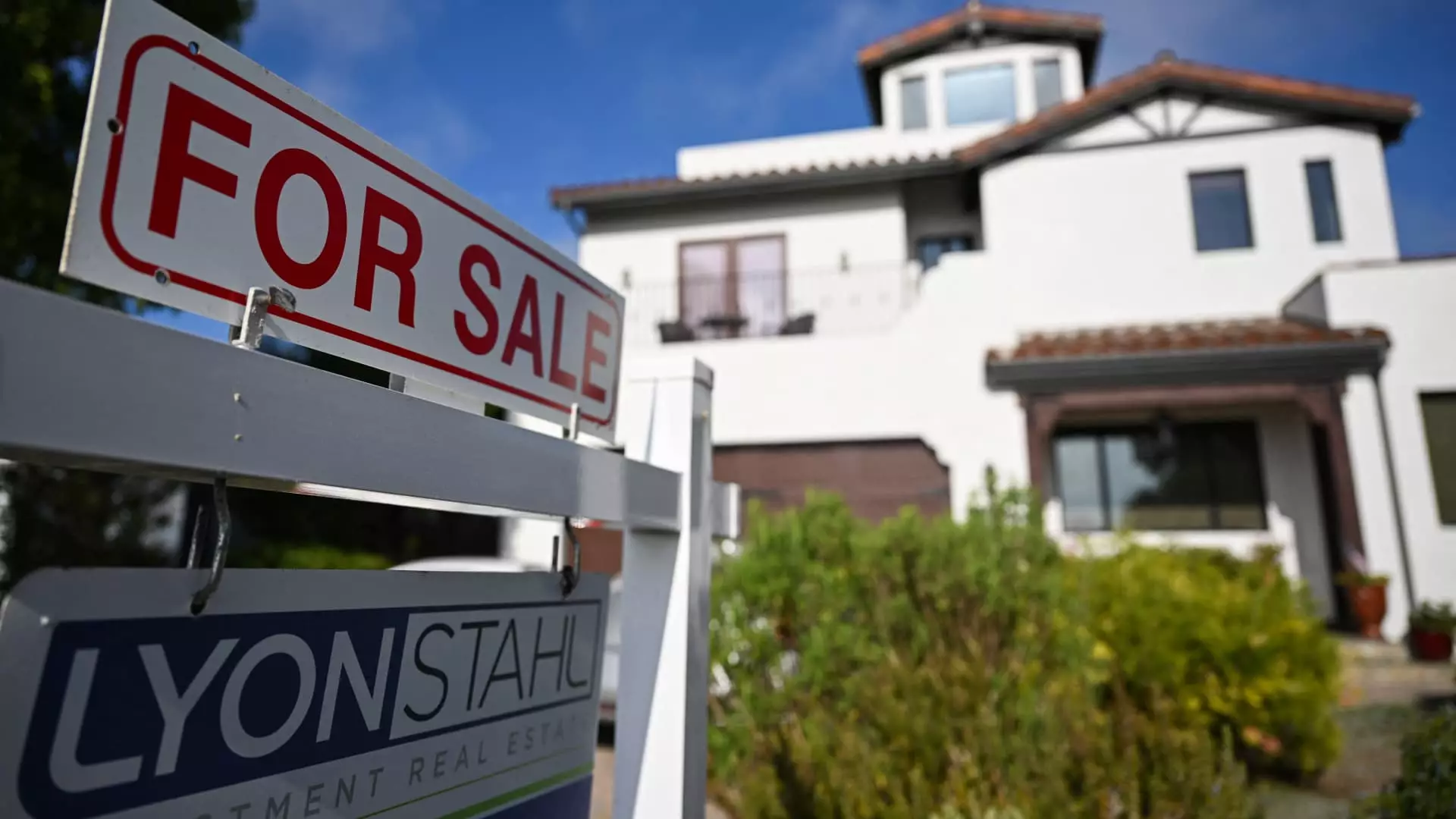The financial landscape is a precarious arena, especially for potential homebuyers who are currently reeling from volatility in mortgage rates. Recently, mortgage rates experienced a sharp decline, plummeting by 12 basis points to an average of 6.63%. This significant drop follows the Trump administration’s controversial tariff announcement, leaving both investor confidence and economic outlooks hanging by a thread. Matthew Graham, COO of Mortgage News Daily, highlighted an inherent market wariness triggered by global trade uncertainties. It’s evident that tariff-induced anxiety pushes many investors toward bonds, subsequently causing mortgage rates to echo the dynamic fluctuations of Treasury yields.
Strikingly, while there is a temporary relief in the form of lower mortgage rates, one must question whether this will be a sustainable trend or merely an illusionary blip for an already beleaguered housing market.
The Homebuyer’s Dilemma: Rising Payments and Declining Affordability
As mortgage rates dipped, one would hope it would translate into affordability for the average homebuyer. However, this notion is far from reality. In fact, the monthly payment for a typical U.S. homebuyer has reached record heights of $2,802— a staggering increase that underscores the dismal conditions many are facing as spring unfolds. Despite the lower mortgage interest rates, home purchase prices are still climbing. Reports indicate that home prices surged by 3.4% compared to last year, significantly straining prospective buyers’ budgets.
The heart-wrenching statistic reveals that approximately 70% of American households cannot even afford a $400,000 home, with the estimated median price of new houses exceeding $460,000 in the coming years. Such figures echo the rampant disparity between thriving market trends and the lack of substantial wage growth, pushing the American Dream of homeownership further out of reach for millions.
Historical Context: The Shortage of Affordable Housing
A stark reality looms over the current real estate market: insufficiency in lower-value homes. Chronic underbuilding since the Great Recession has resulted in a constrained housing supply that is all but devoid of affordability. The increase in home listings, which reportedly rose by 10% year-on-year in March, does little to serve those on the lower end of the economic scale. The homes entering the market do not cater to the overwhelming demand for affordable housing, thus perpetuating a cycle of scarcity.
Matt Ferris, a Redfin agent from northern Virginia, reflects this sentiment, noting the influx of homeowners ready to list, but it’s questionable whether these listings genuinely correspond to the cascade of buyers looking for economically accessible properties. The disintegration of the American housing dream continues unabated for a significant portion of the population.
The Seasonal Shift: Buyer Response and Market Rebalancing
Traditionally, spring serves as a robust season for real estate, promising new beginnings for prospective buyers. However, 2025’s landscape tells a different narrative. Despite disclosures of increased property listings—up 28%—homes are languishing on the market for an extended period. The share of real estate listings experiencing price reductions is on the rise, further illustrating the hesitancy of buyers stung by economic uncertainty. Victims of rising costs and fears of an unpredictable market, many buyers are simply choosing to wait, a reaction reflected in the 5.2% drop in pending sales across major metropolitan areas.
Cities like Jacksonville and Miami are combating significant sales declines, raising alarm bells about the sustainability of economic recovery and consumer confidence in the housing market. With the specter of previous pandemic-related migration shifts also at play, the complexities of today’s housing environment render predictions as murky as the water in a storm.
The Unsettling Future of the Housing Market
The very foundation of homebuying—the affordability index—is tilting precariously toward a cliff. The minimum income to purchase even a modest home has skyrocketed, leading to a profound socioeconomic chasm that implicates policy decisions at national and local levels. About 52.87 million households are projected to have incomes that fall short of purchasing a $200,000 home in 2025.
The bleak reality underscored by these figures reveals the urgency for both public and private sectors to prioritize an increase in affordable housing supply. The vital conversation around economic policy must evolve to address this historical misalignment between income growth and housing costs, lest we continue to push homeownership—once a beacon of stability—further out of reach for the average American.
As the debates simmer in political corridors and households bear the brunt of these spiraling rates, the call for insightful reform grows louder. Advocating for accessible housing in an ever-changing financial realm remains imperative for achieving a truly equitable economy.

Leave a Reply